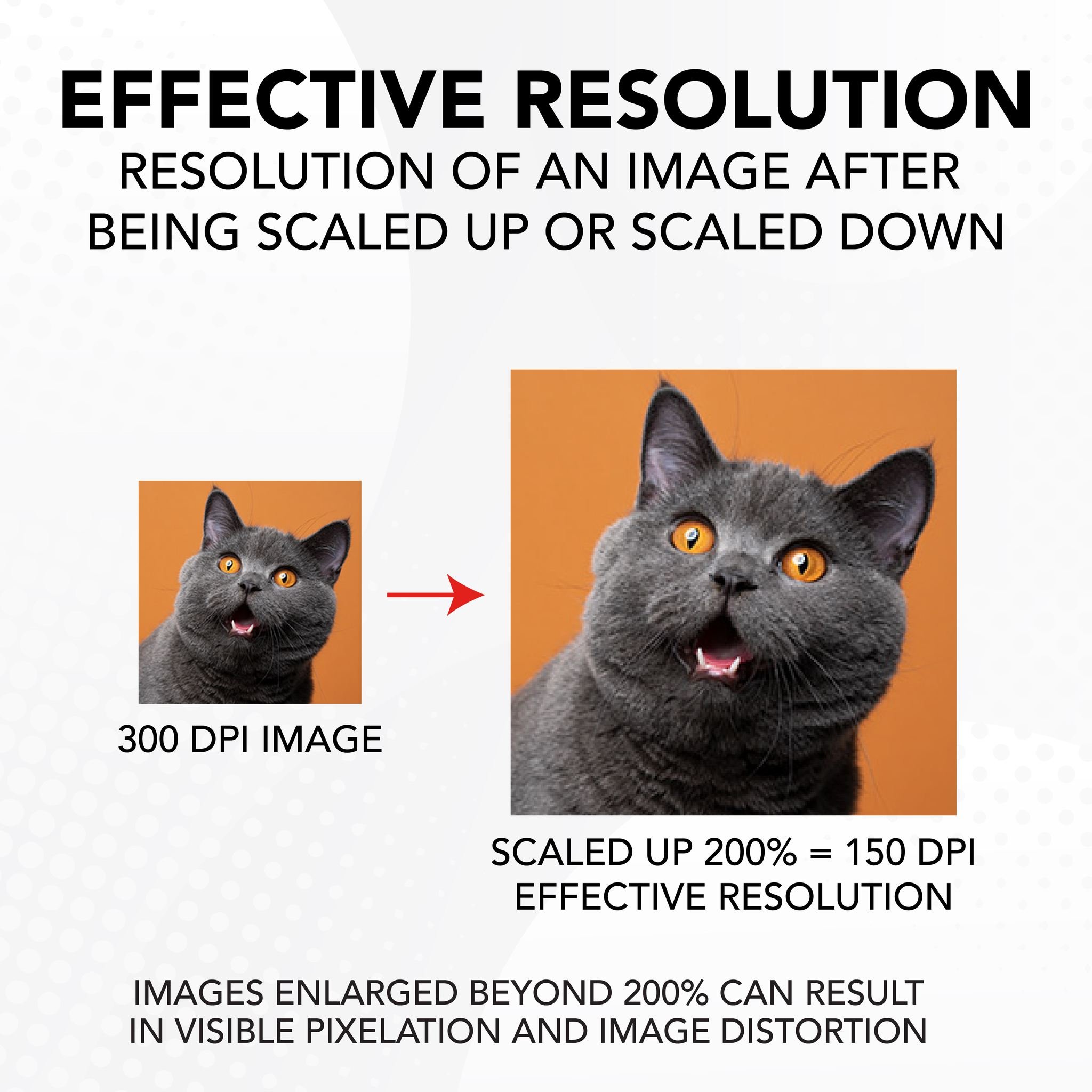Effective Resolution for Large Format Printing
In the dynamic world of visual communication, understanding the nuances of resolution becomes paramount, especially when dealing with large-format prints that demand attention and clarity. Join us as we demystify the concept of effective resolution, explore effective resolution calculations, and delve into the unique resolution requirements for large-format printing. Whether you're a seasoned design professional or an eager enthusiast, this article will equip you with the knowledge to create clear and sharp graphics for print sizes big and small.
What is Effective resolution?
Effective resolution is the resolution of an image after being scaled up or scaled down. Scaling an image doesn’t actually change its physical pixel dimensions, but it does affect how sharp and clear the image appears to the human eye and how it will visibly appear when printed. Scaling images up in size reduces effective resolution, meaning printed products that have been scaled up may end up looking pixelated or blurry, even if it looks fine on a computer screen. Scaling images down in size increases effective resolution, resulting in printed products that look crisp and clear.
Determining Effective Resolution
Effective resolution can be determined by dividing an image’s resolution (ppi/dpi) by the percent scaled. For example, if an image with a resolution of 300dpi is scaled up by 200%, the effective resolution becomes 150dpi (300dpi/200% (2.0) = 150dpi). Or, if that same image is scaled down by 60%, the effective resolution becomes 500dpi (300dpi/60% (0.6) = 500dpi).
While knowing this formula can prove useful for design professionals, most graphic software programs, such as the Adobe Creative Suite programs, automatically calculate effective resolution.
large Format Resolution Requirements
Effective resolution is an important topic when it comes to large-format printing. Large-format printing often requires images to be scaled up in size, reducing effective resolution. As discussed in our other blog posts, 300dpi is the standard resolution for most print products. The exception to this rule is large format prints. Here at SUN, we require a 100dpi minimum for large format projects. Most large format products, such as banners and signs, are intended to be viewed from a distance, so while the effective resolution may cause the image to appear slightly blurry if looked at up close, it will appear visually crisp from a distance. It’s also important to keep in mind that effective resolution only affects raster graphics since vector graphics can be scaled infinitely without affecting quality.
In the realm of large-format printing, effective resolution is a crucial factor in achieving the visual impact. As we've uncovered, the delicate balance between scaling and resolution can determine whether your prints mesmerize or fall short. Armed with the knowledge of how to calculate effective resolution and the unique requirements of large-format projects, you're now empowered to create striking banners, signs, and displays that captivate audiences from near and far.



